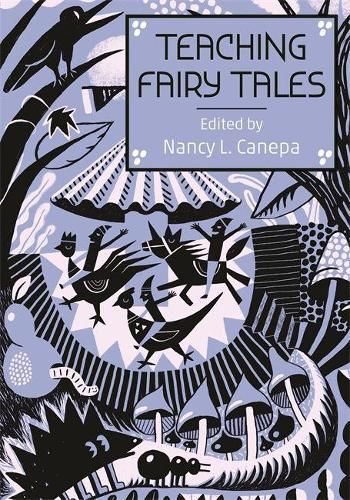Readings Newsletter
Become a Readings Member to make your shopping experience even easier.
Sign in or sign up for free!
You’re not far away from qualifying for FREE standard shipping within Australia
You’ve qualified for FREE standard shipping within Australia
The cart is loading…






This title is printed to order. This book may have been self-published. If so, we cannot guarantee the quality of the content. In the main most books will have gone through the editing process however some may not. We therefore suggest that you be aware of this before ordering this book. If in doubt check either the author or publisher’s details as we are unable to accept any returns unless they are faulty. Please contact us if you have any questions.
Teaching Fairy Tales edited by Nancy L. Canepa brings together scholars who have contributed to the field of fairy-tale studies since its origins. This collection offers information on materials, critical approaches and ideas, and pedagogical resources for the teaching of fairy tales in one comprehensive source that will further help bring fairy-tale studies into the academic mainstream. The volume begins by posing some of the big questions that stand at the forefront of fairy-tale studies: How should we define the fairy tale? What is the
classic
fairy tale? Does it make sense to talk about a fairy-tale canon? The first chapter includes close readings of tales and their variants, in order to show how fairy tales aren’t simple, moralizing, and/or static narratives. The second chapter focuses on essential moments and documents in fairy-tale history, investigating how we gain unique perspectives on cultural history through reading fairy tales. Contributors to chapter 3 argue that encouraging students to approach fairy tales critically, either through well-established lenses or newer ways of thinking, enables them to engage actively with material that can otherwise seem over-familiar. Chapter 4 makes a case for using fairy tales to help students learn a foreign language. Teaching Fairy Tales also includes authors’ experiences of successful hands-on classroom activities with fairy tales, syllabi samples from a range of courses, and testimonies from storytellers that inspire students to reflect on the construction and transmission of narrative by becoming tale-tellers themselves. Teaching Fairy Tales crosses disciplinary, historical, and national boundaries to consider the fairy-tale corpus integrally and from a variety of perspectives. Scholars from many different academic areas will use this volume to explore and implement new aspects of the field of fairy-tale studies in their teaching and research.
$9.00 standard shipping within Australia
FREE standard shipping within Australia for orders over $100.00
Express & International shipping calculated at checkout
This title is printed to order. This book may have been self-published. If so, we cannot guarantee the quality of the content. In the main most books will have gone through the editing process however some may not. We therefore suggest that you be aware of this before ordering this book. If in doubt check either the author or publisher’s details as we are unable to accept any returns unless they are faulty. Please contact us if you have any questions.
Teaching Fairy Tales edited by Nancy L. Canepa brings together scholars who have contributed to the field of fairy-tale studies since its origins. This collection offers information on materials, critical approaches and ideas, and pedagogical resources for the teaching of fairy tales in one comprehensive source that will further help bring fairy-tale studies into the academic mainstream. The volume begins by posing some of the big questions that stand at the forefront of fairy-tale studies: How should we define the fairy tale? What is the
classic
fairy tale? Does it make sense to talk about a fairy-tale canon? The first chapter includes close readings of tales and their variants, in order to show how fairy tales aren’t simple, moralizing, and/or static narratives. The second chapter focuses on essential moments and documents in fairy-tale history, investigating how we gain unique perspectives on cultural history through reading fairy tales. Contributors to chapter 3 argue that encouraging students to approach fairy tales critically, either through well-established lenses or newer ways of thinking, enables them to engage actively with material that can otherwise seem over-familiar. Chapter 4 makes a case for using fairy tales to help students learn a foreign language. Teaching Fairy Tales also includes authors’ experiences of successful hands-on classroom activities with fairy tales, syllabi samples from a range of courses, and testimonies from storytellers that inspire students to reflect on the construction and transmission of narrative by becoming tale-tellers themselves. Teaching Fairy Tales crosses disciplinary, historical, and national boundaries to consider the fairy-tale corpus integrally and from a variety of perspectives. Scholars from many different academic areas will use this volume to explore and implement new aspects of the field of fairy-tale studies in their teaching and research.